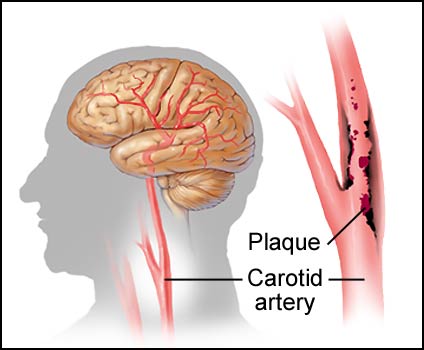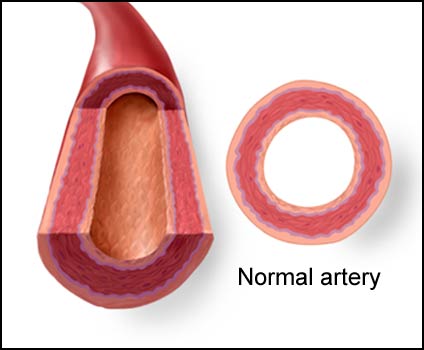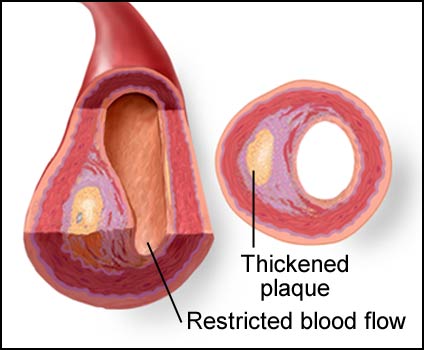
Carotid Artery Disease
Carotid artery disease is a condition that causes the narrowing of the carotid artery by the formation of atherosclerotic plaques (see fig. 1). The carotid artery supplies blood to portions of the neck, head and brain. Individuals with carotid artery disease are at increased risk for a stroke. Atherosclerosis results in plaque build-up within the inner walls of arteries (see fig. 2). Plaque is formed from cholesterol, fat, calcium, and other substances in the blood. In early atherosclerosis, a fatty streak develops on the inner lining of the blood vessel. In advancing atherosclerosis, a fatty streak develops into plaque (see fig. 3). In advanced atherosclerosis, the plaque thickens and the lumen of the blood vessel narrows (see fig. 4). As the condition advances, blood flow is restricted. A stroke due to carotid artery disease likely results from plaque rupture which causes a piece of plaque or blood clot traveling to the brain through the circulation.
Figure 1: Carotid artery disease.
Figure 2: Normal carotid artery.
Figure 3: Advancing atherosclerosis.
Figure 4: Advanced atherosclerosis.
Visit Medmovie.com Website for more information.



